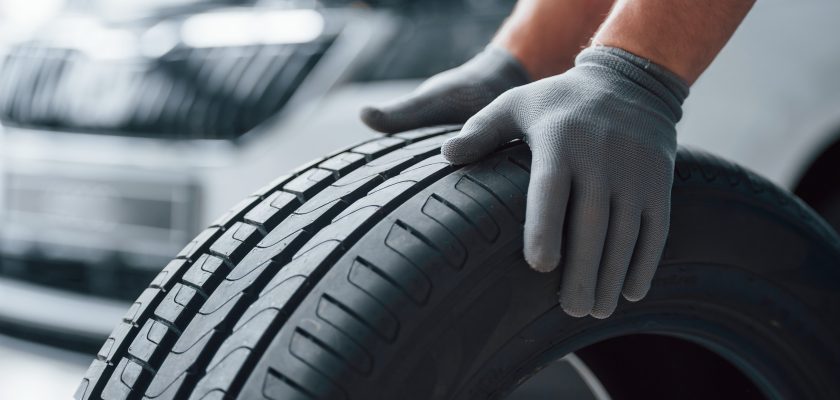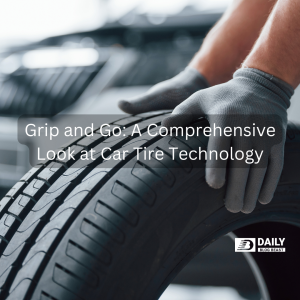Introduction:
Car tires, often overlooked in the grand scheme of automotive components, are the unsung heroes of every journey. As the sole point of contact between the vehicle and the road, these round rubber companions play a pivotal role in ensuring a smooth, safe, and efficient ride. Beyond their primary function of supporting the vehicle’s weight, car tires contribute significantly to handling, braking, and overall driving performance.
In the vast landscape of tire options, each tread pattern, rubber compound, and design element serves a purpose—a delicate dance between innovation and functionality. From all-terrain warriors to sleek performance models, the world of car tires is a diverse ecosystem catering to the unique needs and preferences of drivers.
The evolution of tire technology has witnessed a fascinating interplay of engineering ingenuity and the pursuit of enhanced driving experiences. As we embark on this exploration of car tires, we delve into the intricacies of tread design, tire types, and the critical factors influencing tire selection. Join us on a journey where the rubber meets the road and discover the fascinating world of car tires—where safety, performance, and reliability come full circle in every revolution.
History of Tyres:
The history of tires dates back to the 19th century when Scottish inventor John Boyd Dunlop patented the pneumatic tire in 1888, using air-filled tubes to cushion the ride. However, it was André Michelin who introduced the first practical removable tire in 1891. Over the years, innovations like steel belts, radial ply construction, and tubeless designs emerged, enhancing durability and performance. The mid-20th century saw a shift towards radial tires, revolutionizing the industry. Today, advancements in materials and tire technology continue to shape a crucial aspect of automotive evolution, ensuring safer, more comfortable rides for drivers worldwide.
Modern Tire Technology and Its Meteorological Mastery:
Modern tire technology has ushered in a new era of driving comfort and safety, with innovations tailored to diverse weather conditions. Advanced tread compounds, such as silica-infused rubber, enhance traction and grip, optimizing performance in wet or icy conditions. The development of all-season and winter-specific tire designs ensures adaptability to varying temperatures, providing drivers with confidence in unpredictable weather.
Run-flat technology enables continued driving even after a puncture, offering a crucial safety net. Tread patterns have evolved with computer-aided design, optimizing water dispersion for improved wet traction and reducing the risk of hydroplaning. Additionally, intelligent tire sensors monitor pressure and temperature, enhancing safety and fuel efficiency. These technological strides not only extend the lifespan of tires but also contribute to fuel economy and reduce environmental impact.
From self-sealing tires to sensors that adjust tire pressure on the fly, modern tire technology is a testament to the industry’s commitment to innovation, ensuring optimal performance and safety across diverse weather conditions.
Evaluating the Risks and Safety in Motion:
Evaluating tire risks and ensuring safety in motion is a critical aspect of responsible driving. The tire, as the primary point of contact with the road, plays a pivotal role in vehicle safety. Regular inspections for signs of wear, proper inflation, and adequate tread depth are fundamental practices in risk mitigation.
Understanding the importance of load capacity and speed ratings contributes to maintaining a balance between performance and safety. Environmental factors, such as temperature fluctuations, also impact tire behavior, emphasizing the need for seasonal adjustments. Moreover, recognizing the signs of tire damage or deterioration and addressing them promptly is crucial in preventing catastrophic failures.
In motion, the tire’s interaction with diverse road conditions, from dry asphalt to wet or icy surfaces, necessitates a comprehensive approach to safety. Awareness of driving conditions, defensive driving practices, and adherence to recommended tire maintenance schedules collectively form a holistic strategy for evaluating tire risks and ensuring a secure journey for drivers and passengers alike.
Top 10 companies of car tires around the world and their features:
Michelin: Known for innovative technologies, long tread life, and excellent performance.
Bridgestone: Offers a wide range of high-performance and eco-friendly tires known for durability.
Goodyear: Renowned for all-season and high-performance tires, often incorporating advanced technology.
Continental: Focus on safety and performance, producing tires for various vehicles and driving conditions.
Pirelli: Emphasis on high-performance and luxury tires, often used by premium car manufacturers.
Cooper Tire: Offers a diverse range of tires, including those for off-road and high-performance vehicles.
Hankook: Known for providing a balance of performance, comfort, and longevity across various tire categories.
Yokohama: Offers a variety of tires with a focus on performance, fuel efficiency, and environmental sustainability.
Firestone: Known for a range of affordable and reliable tires, including those for passenger cars and trucks.
Toyo Tires: Produces tires for various vehicles, with an emphasis on performance and innovation.
For the most up-to-date information on specific tire features, it’s recommended to visit the official websites of these companies or consult recent consumer reviews and expert analyses.
Conclusion:
In the modern era, car tires stand as a testament to the seamless integration of technology, offering a myriad of advantages that redefine driving experiences. The evolution of tire technology has prioritized not only safety but also enhanced performance, durability, and environmental sustainability.
Advanced tread designs and compounds, coupled with innovations like run-flat technology and intelligent sensors, contribute to improved traction, fuel efficiency, and overall road safety. The adaptability of tires to diverse weather conditions ensures year-round confidence for drivers, while innovations in materials and construction enhance longevity.
Furthermore, the integration of technology in tire manufacturing has led to the development of eco-friendly options, reducing the environmental impact of tire production and disposal. As we roll into the future, the synergy between automotive engineering and tire technology continues to pave the way for safer, more efficient, and environmentally conscious journeys on the road. The tire, once a simple rubber ring, now represents a sophisticated blend of science and engineering, ensuring that every revolution is a step towards progress in the world of transportation.


